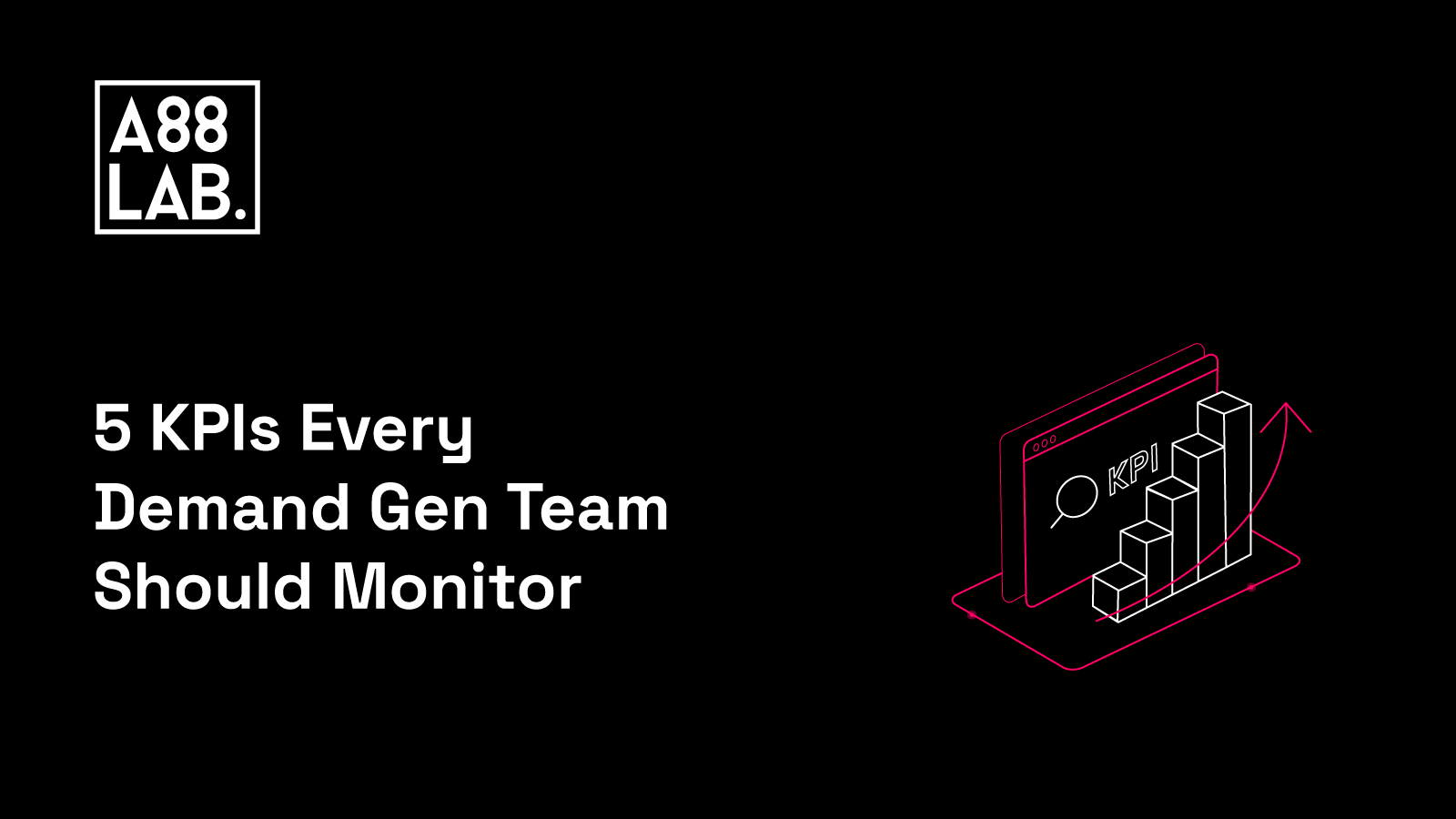User engagement is a crucial SaaS metric that reveals the level of product adoption and user satisfaction. It encompasses a range of behaviors, including how frequently customers log in to use the product, their interactions with other users, and their overall loyalty to the service.
However, getting high user engagement is more difficult than it looks like. It requires understanding what motivates each individual customer or user base, creating unique experiences that appeal to customers’ needs, and ultimately, increasing their usage of your products over time, which should result in higher LTV and reduced Churn.
To really connect with the ICPs you want as customers, you've got to offer helpful content that addresses their needs. Whether they're just starting to realize they have a problem or they've already signed up and are using your platform, being there with the right information at the right time is crucial.
In this blog post, we will discuss the importance of high-impact content for SaaS user engagement and the different content strategies that can help you achieve it.
Importance of Content for User Engagement
User engagement is one of the main factors that determines a SaaS company's success. When you prioritize it, you show your customers just how valuable and enjoyable your product really is, at the same time, showing that you care about providing the best customer experience. At the end of the day, the goal is to motivate people to keep coming back for more.
One highly effective way to boost user engagement is by developing an impactful content strategy. This approach can benefit SaaS companies in numerous ways, including:
-
Building customer loyalty, leading to long-lasting relationships between users and the company
-
Increasing revenue and making it more predictable
-
Standing out from the competition by providing excellent customer experiences and building a positive image in clients' minds
By creating high-quality content that resonates with their target audience, SaaS companies build trust and credibility, positioning themselves as thought leaders in their industry. This, in turn, can help to foster a sense of community among users, encouraging them to engage more deeply with the product and become loyal brand advocates.
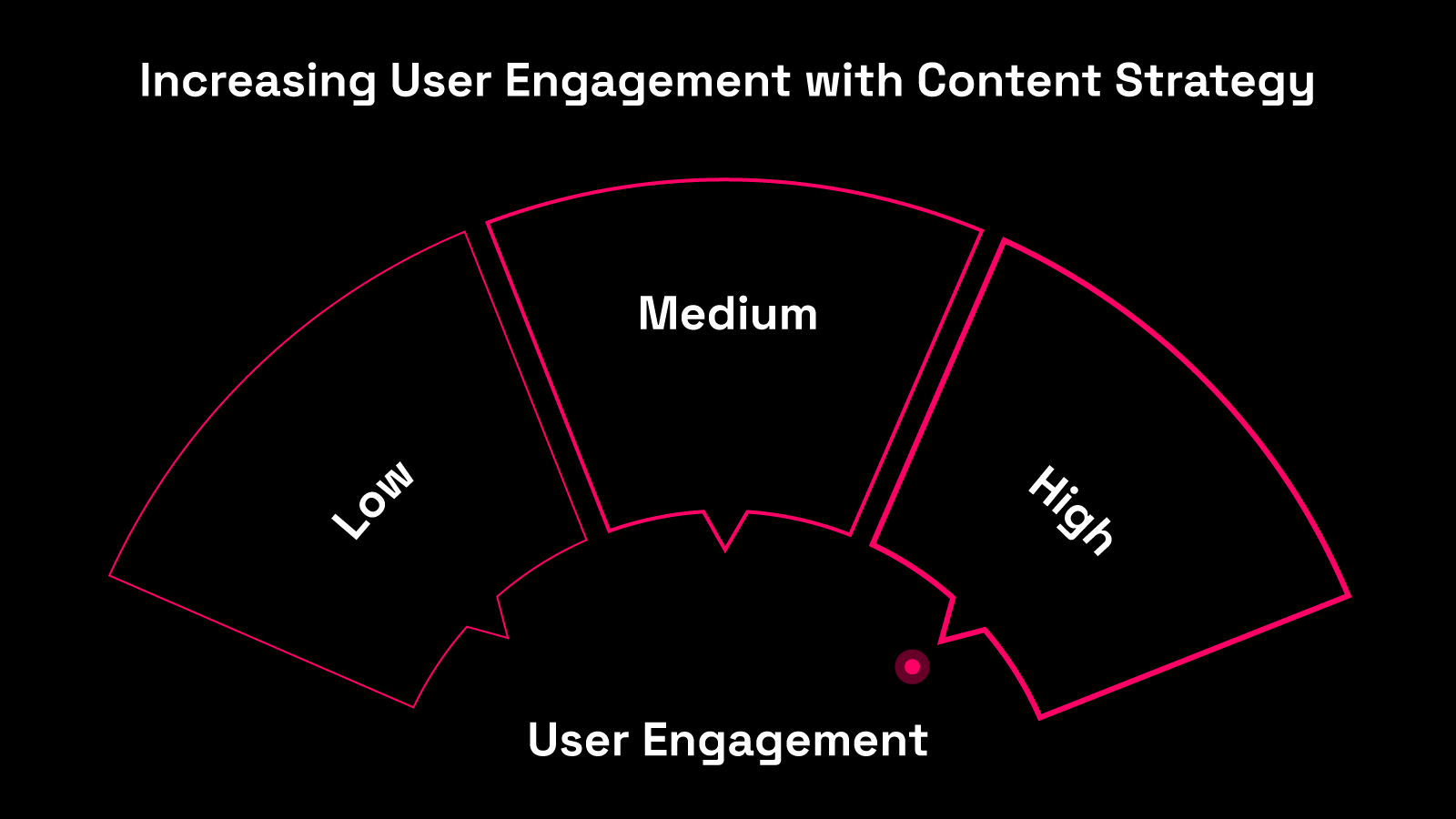
Content Creation Strategies for Increased User Engagement
High-impact content is not created overnight. It requires a strategic approach, careful planning, and constant analysis and adaptation to keep up with changing trends and user preferences. Here are some key strategies for creating high-impact content that can help to boost SaaS user engagement:
-
Creating user-generated content campaigns
-
Utilizing niche communities and micro-influencers
-
Creating competitor comparison pages
-
Using AI to generate content with ethical data utilization
-
Working on collaborative content with industry experts
By focusing on these key areas, SaaS companies can create content that not only resonates with their target audience but also encourages them to actively engage with the brand and become loyal customers.
User-Generated Content Campaigns
User-generated content (UGC) is brand-specific content created by customers and published on different social media platforms or other channels. UGC comes in many forms, including images, videos, reviews, a testimonial, or even a podcast. It’s actually one of the most important elements of SaaS storytelling.
UGC is essential for SaaS for numerous reasons:
Promotes Credibility
UGC promotes credibility and builds confidence among users. One user is most likely to trust and value a product or service when they can see actual people using and enjoying it. Adding UGC into marketing campaigns and social media posts also motivates customers to interact with your business and take part in the dialogue. As a result, the community that surrounds the good or service may grow stronger.
Adds Value by Being Authentic
While 92% of marketers believe most or all of the content they create resonates as authentic, only 51% of users share the same opinion. That's the reason UGC has a strong impact on your content strategy.
People trust other people. By encouraging your customers to share their experiences with your product, you create authentic content that builds trust and credibility with your audience. Make sure that this content is genuine and comes from your actual customers, brand loyalists, or employees. Attempting to fake UGC can end up with serious consequences for your brand reputation.
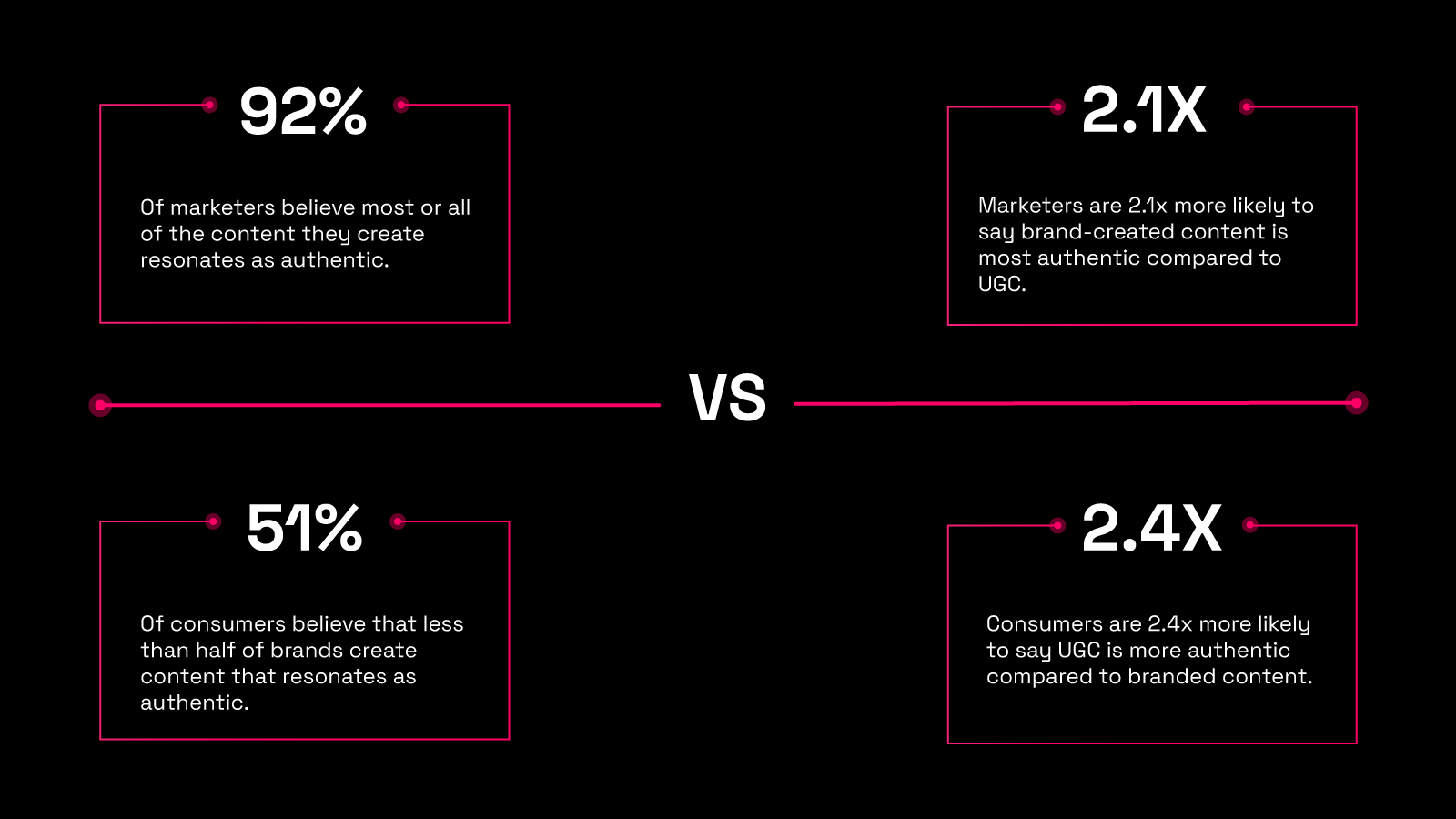
Builds Brand Loyalty and Grows the Community
Encouraging user-generated content builds a loyal customer base for your SaaS and creates a sense of community. By allowing users to actively participate in the growth and development of the product, UGC fosters a stronger emotional connection and sense of ownership. Additionally, UGC promotes dialogue between the SaaS company and its users, leading to a more engaged community and a better understanding of customer needs.
Boosts Conversions and Impacts Buying Decisions
In the final stages of the buyer's journey, converting your audience and persuading them to make a purchase is crucial and user-generated content is a highly effective tool for it. It serves as genuine social proof that your SaaS product is worth buying. When your audience sees people similar to them using your product, they are more likely to make a purchase.
By implementing UGC, SaaS companies can enhance their narrative approach. This will significantly boost potential customers' trust, confidence, and belief in the authenticity of your company's offerings. By featuring real people and their experiences with the product or service, UGC can also help foster a stronger community around the product or service by increasing engagement and interaction among users.
Utilizing Niche Communities and Micro-Influencers
High user engagement requires reaching niche markets that are looking for the solution your SaaS company is offering. This is where micro-influencers come into play. Since their content is already niched out to their audience, they naturally produce highly personalized content that resonates with their audience and fosters trust and credibility.
If expanding the reach of your SaaS company is already challenging, partnering up with niche or micro-influencers can be a great strategy. You can collaborate with them through product reviews, giveaways, discount codes, guest posts, live events, or webinars.
For example, you could send influencers a free trial of your software and ask them to provide honest feedback to their followers. Additionally, you may also provide influencers unique discount codes or affiliate links to share with their followers. Also, you can organize a joint live event and webinar with influencers to showcase your SaaS company's products or services.
There are several steps in finding the right niche or micro-influencer to partner with:
1. Identify Your Goals
When looking for the perfect micro influencer match for your SaaS, first establish your objectives. What do you want to accomplish? Are you hoping to boost engagement, drive more traffic to your website, or increase awareness of your brand? You need to be clear about your definition of success for the partnership's end. This will identify the type of influencer you need and be transparent about your expectations for your SaaS product.
2. Define Your Audience
Understanding your audience will help you find a content creator who shares your brand's values and appeals to your ideal customer. If you haven't defined your audience yet, don't worry. You can use social media analytics tools or survey your existing customers to gain a better understanding of their demographics and interests. Choose a micro-influencer who targets the same audience as your SaaS product, and your marketing campaigns will feel more authentic and trustworthy.
3. Research Influencers
Once you have established your objectives and target audience, identify the right influencers to partner with. When you've found a few potential influencers, analyze them and see if their content and engagement align with your brand values. Look for authenticity in their interactions with their followers, consistency in their style or niche, and relevance to your brand.
4. Set Your Budget
In order to effectively run a micro-influencer campaign, establish a budget that is both realistic and within your means. By doing so, you can automatically qualify potential influencers based on their fees and ensure that you're not overspending on your marketing efforts.
5. Make The Final Decision
Once you've found the perfect match, formalize your partnership with agreements and contracts that outline the terms and expectations of the collaboration. Work together to create a campaign plan that includes timelines and content expectations, and don't forget to track your progress by requesting access to their analytics reports. With a successful influencer marketing campaign, you can boost your brand awareness and drive more leads to your SaaS product.
Competitor Comparisons Pages
Competitor comparison pages or articles are content that directly compares different products, services, or solutions to help potential customers understand the similarities and differences between them, enabling them to make informed decisions and avoid buyer's remorse.
Product comparisons are often a high-impact content strategy that SaaS companies use to drive high user engagement.
When writing a product comparison article, or a landing page, the content should:
Be Honest and Trustworthy
SaaS companies should maintain transparency in their comparisons. Users trust content that is honest and unbiased. Avoid favoring one product over another without valid reasons, and make it clear if there's any affiliation with the products being compared.
Define Comparison Criteria
Clearly outline the criteria for comparison. In the context of SaaS, this could include factors like features, pricing, scalability, integrations, user-friendliness, and customer support. These criteria help users understand the basis of the comparison.
Help The Reader Decide
Focus on helping users make the right choice. By the end of the content, readers should have a clear idea of which SaaS solution aligns best with their specific needs and requirements.
To create exceptional product comparison content, follow these steps:
-
Conduct thorough keyword research to identify topics that are worth covering and become an expert in your field to provide valuable insights.
-
Develop a unique approach by offering a distinct perspective, like the best choices for a specific year or catering to niche audiences.
-
Don't waste readers' time with irrelevant information; get straight to the point and present essential information quickly, potentially in the introduction.
-
Pay attention to structure and organize your content effectively with headings, lists, and visually appealing elements like images. Make it easy for readers to navigate and find the information they require.
By implementing product comparisons as part of your content strategy, your SaaS can engage with users effectively, build trust, and guide potential customers toward making well-informed decisions. This approach not only drives user engagement but also contributes to higher conversion rates and customer satisfaction.
Incorporating AI-Generated Content With Ethical Data Utilization
AI in content creation is a game-changer for SaaS customer engagement. It helps create impactful content that captivates users with various AI tools such as NLP, image recognition, and audio transcription.
NLP, for instance, crafts engaging text content from data, resulting in more compelling messaging. Image recognition ensures that visuals resonate with the audience, while audio transcription transforms spoken words into text, making it easier to create transcripts or captions.
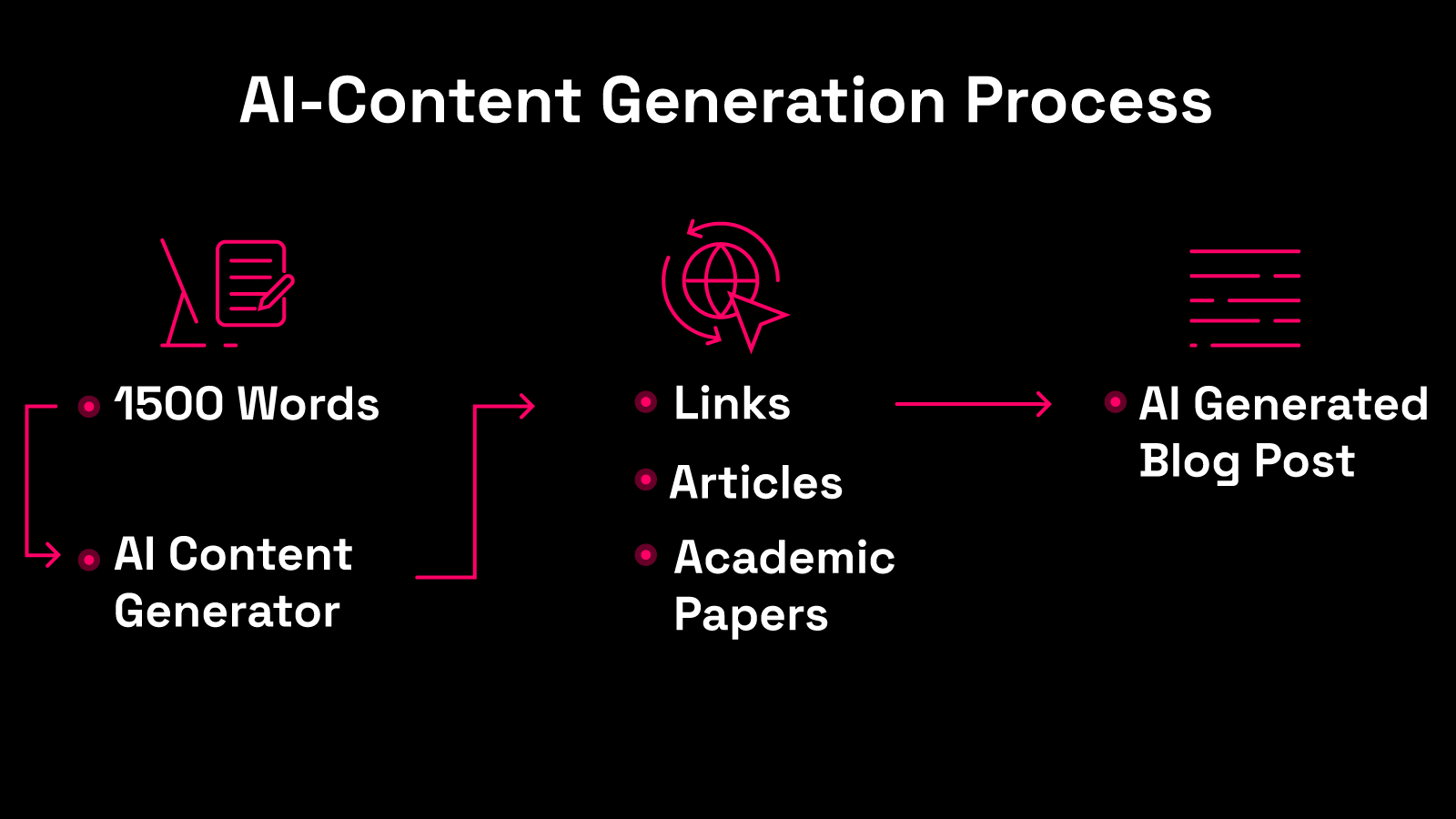
Furthermore, AI optimizes your content based on user engagement data, resulting in higher impact. This means more efficiency, better quality content, and the ability to expand your reach, all while ensuring ethical usage and user privacy.
Incorporating AI-generated content for SaaS Customer Engagement is becoming increasingly common, but the ethical implications of it can not be overlooked.
Bias and Discrimination
One major concern is bias and discrimination. AI-driven recommendations shouldn't favor certain demographics over others. SaaS providers must ensure that their AI algorithms are trained on diverse datasets representing all user groups, thus avoiding bias and delivering content that resonates with a broader audience.
Privacy and Data Protection
User data is often collected and analyzed to improve customer engagement, so it's vital to prioritize privacy and inform users about how their data is used. Users should always have the option to opt-out, and data protection should be at the core of AI-driven content creation.
Accountability and Transparency
SaaS providers must be open about how AI algorithms make recommendations or generate content. If AI-generated content causes harm or discrimination, SaaS companies should take responsibility and fix the situation immediately.
Addressing ethical concerns related to AI content creation is not just about compliance; it's about creating a positive and engaging user experience. Minimizing risks and avoiding biases, protecting privacy, and promoting transparency benefits both the user and the SaaS provider.
Collaborative Content With Industry Experts
In today's SaaS industry, buyers crave trustworthy marketing messages. As a result, you have to incorporate high-quality content into your marketing strategy for success. Content creation is a collaborative effort that requires valuable and engaging input from various sources to achieve high user engagement. Collaborating on content can help expand your reach, increase engagement, establish trust, and showcase expertise.
SaaS businesses of all sizes have several options to, directly and indirectly, harness the insights and support of experts in their field. CMOs and marketing teams must determine the best options for their unique circumstances to establish successful partnerships that result in compelling, targeted content that resonates with consumers. Here are a few of the best options to consider.
Have Experts on Staff
One effective way for SaaS companies to benefit from industry expertise is by hiring them. This not only enhances your brand's credibility but also showcases your commitment to delivering top-notch products and well-informed marketing strategies.
Having easy access to experts will allow you to fact-check and ensure that your content is based on the latest industry data, ultimately leading to better customer experiences and higher retention rates.
Collaborate With Experts
If your budget doesn't allow for hiring full-time industry experts, there are other ways to tap into their specialized knowledge. Collaborative marketing activities are one such option. Influencer marketing is a popular example of this.
Although it is often associated with brands partnering with social media stars, there are also instances where major influencers themselves are experts in the SaaS industry. By collaborating with them, you can create content that resonates with your target audience and drives high user engagement.
Collaborate With Industry Publications
Create high-impact content by collaborating with respected industry publications to get your content mentioned or published. By contributing your own informed opinions and insights, you can instantly enhance your credibility and connect with experts in your field.
For example, if you offer a remote work SaaS platform, you could write a guest post on a site like TechTarget, sharing your views on the latest trends in asynchronous workflows. This approach not only provides value to the reader but also enables you to network with high-ranking individuals in your industry, ultimately driving user engagement and boosting your company's success.
Conclusion
User Engagement helps SaaS businesses better understand customer preferences by providing personalized experiences based on preferences and interests. However, achieving this engagement is a never-ending process that requires constant improvement.
There are many different content strategies that your SaaS can implement to achieve this engagement, but at the end of the day, the most important thing in delivering the right content is understanding your users and leveraging interactions to create experiences they’d love. It’s the only way for you to succeed in anything you do.
.png)
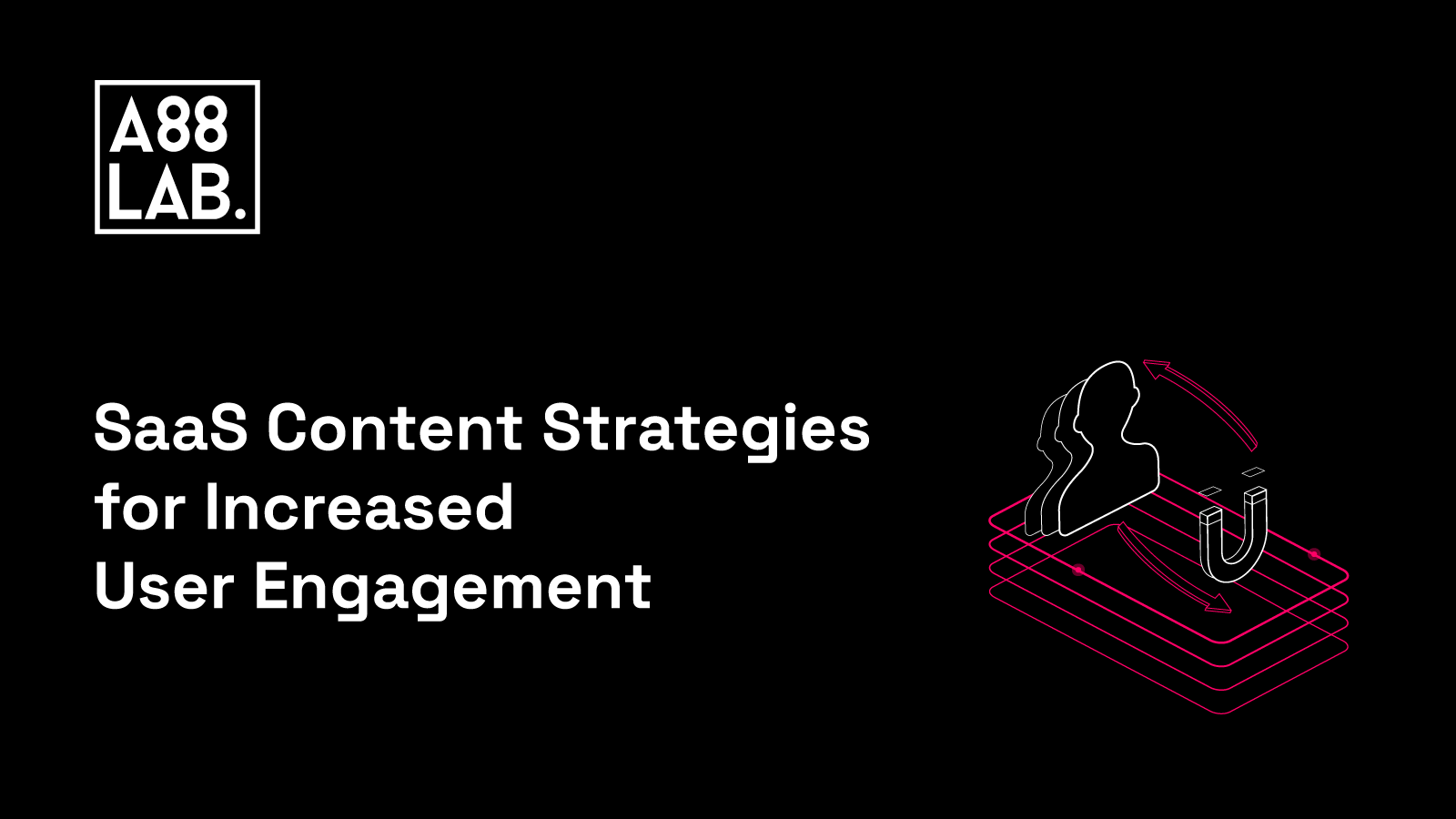
.png)
